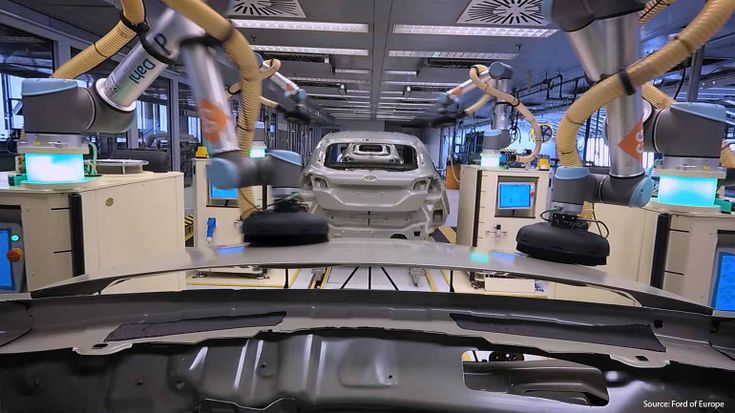The automotive industry was one of the earliest adopters of traditional industrial robots and one of the earliest widespread adopters of cobots. Today, automation penetrates almost every aspect of auto production, from parts and sub-assembly production at Tier 1 & 2 suppliers to the final product rolling off the line at OEM production facilities.
The dance between automakers and automation has been running for decades, but in 2019, according to the International Federation of Robotics, cobots experienced more growth than traditional industrial robots. So, which pain points in automotive production are driving this growth in cobot demand?
In this blog post, guided by automotive experts from Universal Robots, we will look at some automotive production pain points that UR cobots address, explore the growing importance of flexible collaborative robots in automaking and, along the way, we’ll showcase some UR solutions developed in direct response to demand from within the automotive sector.
Engines ready? Let’s get started!
Universal Robots’ cobots are finding increasing traction in automotive production due to their flexibility, small footprint, rapid ROI and consistent performance.
Pulverizing Pain Points
Parts of automotive manufacturing have been highly automated for decades, but there are tasks, especially on the assembly side, that remain “highly dependent on manual labor,” says Jacob Bom Madsen, Software Product Manager at UR. It is on tasks like screwdriving where the flexibility and small footprint of UR’s cobots really benefits automakers: “A lot of auto production occurs in urban locations where it’s just not possible to find an extra 100,000 square meters to expand into,” explains Bom Madsen. “One of the beautiful benefits of cobots is their flexibility: they can be mounted in any orientation, following a risk assessment they can be deployed next to humans without safety fencing and they can successfully perform a wide variety of applications. Crucially, for urban car makers, cobots also have a small footprint, which means they can easily be dropped into existing production lines, mounted on a pedestal or fitted onto a mobile platform.”



